Chapter 1
The dawn of psychedelics
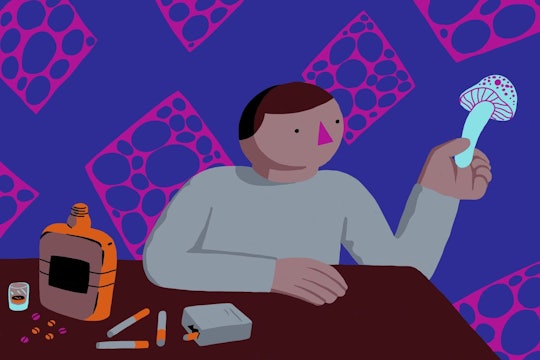
What is a hallucinogen?
Hallucinogens are a diverse group of drugs that are known for their mind-bending abilities. They’re also great at dividing public opinion.
The term “drug” applies to all substances that can induce any biological changes in any of our bodies' functions. But that label doesn't differentiate at all between the drugs taken to alleviate diseases and those used recreationally. For some drugs, their purpose and use is obvious to us.
Antibiotics, for example, have clear and legal medical benefits, while methamphetamines are illegal and therefore perceived as dangerous. But many drugs require a more nuanced understanding of the fine line between helpful and harmful. Opioids, for instance, have revolutionized the medical field and provide vital pain relief for those who need it most, but their misuse and addiction potential has also created a nationwide crisis.
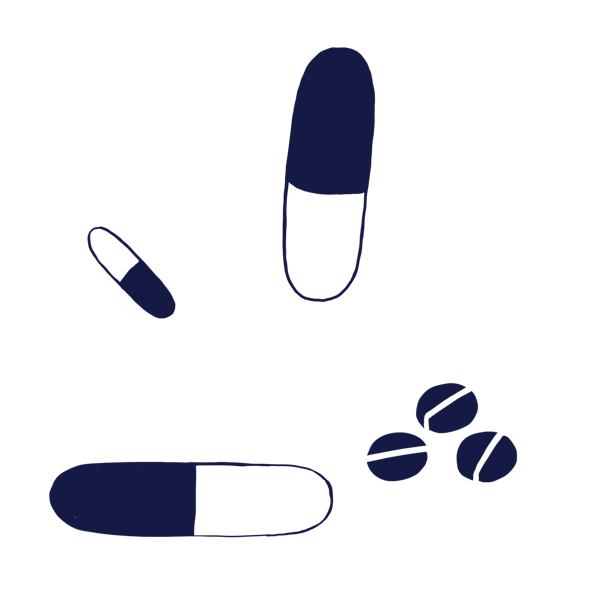
Hallucinogens are an excellent example of this paradox. They are a diverse group of substances collectively defined by their ability to disrupt the ways in which we perceive the world. Though there are many varieties, all act primarily on the brain chemistry involved in that perception. Interestingly, these drugs evoke a wide range of emotions, even among those who are not partaking.
In 1970 President Richard Nixon called Timothy Leary, the Harvard psychologist and proselytizer for LSD, who claimed it would cure all our society's woes, "the most dangerous man in America." Despite (or because of) their role in the widespread cultural upheavals of the 1960s, the majority of these drugs were declared illegal and hallucinogenic research and culture was driven underground. Now, these drugs are in the midst of a significant revival, as new research indicates treatment options too successful to keep hidden for a variety of mental illnesses and disorders.
Hallucinogens are capable of influencing the brain through a variety of mechanisms, by which they induce subjective experiences that depend as much on the person taking them as the chemistry of the drug itself. Several similar hallucinogenic substances are grouped together as"dissociatives," for their ability to separate sensory inputs from perceptions, allowing a user to feel like they have removed themselves from their body, dissociated from their physical form. These trances or "out-of-body" experiences are the effects desired by those taking these drugs recreationally, but they also can be medically useful; dissociative drugs such as ketamine are regularly used as anesthetics during surgery. Generally these substances block NMDA receptors, which mediate communication in the brain, resulting in lost connections between the conscious brain and its sensory inputs. Other dissociatives can also be used medically, such as dextromethorphan (DXM), the drug which gives Robitussin its cough-suppressing ability; or they can be used illicitly, such as phencyclidine (PCP).
But the most well-known group of hallucinogens are undoubtedly the psychedelics. The name comes from the Greek for “mind manifesting,” since these drugs are known for expanding the mind and dissolving the ego. This group includes Lysergic Acid Diethylamide (LSD), psilocybin (the active ingredient in magic mushrooms), and mescaline (often from the peyote cactus).
For many, psychedelics conjure up images of the tie-dyed 60s, of hippies in San Francisco and at Woodstock who preached peace and love to the soundtrack of The Beatles and the Grateful Dead — and whose hallucinogenic drug use was eventually denounced and criminalized. Lost in the subsequent stigmatization was the success psychiatrists had seen while treating their patients with psychedelics in conjunction with therapy. The results were astounding, helping people with diseases from crippling depression to alcoholism, with few to no side effects. Nonetheless, LSD and psilocybin were declared "Schedule I" drugs with no medical value in the Controlled Substances Act (1970), and all public research was embargoed and terminated.
Today, that research is moving back to the forefront. Changing regulations surrounding marijuana and MDMA (“Ecstasy”) are examples of how research can drive legal and cultural evolution — both have shown great success treating disorders like epilepsy and Post-Traumatic Stress Disorder, and social and legal acceptance of both drugs has been growing. As researchers continue to accumulate evidence of recreational drugs' safety and efficacy, psychedelics are poised to be the next success story.
How were psychedelic drugs discovered?
Humans have been using hallucinogens since the early days of civilization, but it wasn't until the early 20th century that hallucinogenic compounds were isolated from their natural sources.
Sitting around a fire at night in the desert, a shaman leads a group of people through a religious ceremony while they experience vivid hallucinations brought on by chewing peyote buttons. This scene could have occurred last week just as easily as it could have been thousands of years ago, part of the long history of psychedelic plant use by the indigenous people of North and South America in spiritual and cultural ceremonies.

Scientists have used carbon dating and archaeological evidence to show the use of naturally occurring psychedelic compounds in the Americas and Europe since prehistoric times, as far back as 3780–3660 BC. Indigenous people of North and South America used psychedelic plant extracts in various spiritual and cultural ceremonies. These most commonly include ingesting peyote, a cactus containing the hallucinogen mescaline; ayahuasca, a drink made from plants containing DMT and monoamine oxidase inhibitors (MAOIs); and mushrooms containing psilocybin. Scientists have even found over 5,000-year-old dried peyote buttons and ground peyote samples that were recovered from caves, including the Shumla Caves in Texas, an area known for vivid cave paintings depicting shamanistic myths that originated around the same time.
Like their counterparts using psilocybin mushrooms in the western hemisphere, the indigenous people of Siberia used fly agaric mushrooms (Amanita muscaria) containing two psychoactive compounds, muscimol and ibotenic acid, which have hallucinogenic properties. In Africa, ibogaine, the active ingredient in iboga tree bark, was heavily used far before Europeans became aware of its hallucinogenic properties in the late 1800s. Ibogaine was isolated from iboga bark by French scientists in 1901 — and, in the last decade, it's been tested for use in treating heroin addiction.
The isolation of ibogaine from iboga bark portended similar successes: the most promising pharmaceutical research in the early 20th century often involved isolating the active compounds in plants with medicinal uses. The hub of this research was the bustling Swiss pharmaceutical industry, centered in Basel, a city nestled in a corner of Switzerland abutting the borders of France and Germany.
That’s where the Sandoz Laboratory (now part of Novartis) was located. Isolating medicinal plant compounds was the primary line of research at Sandoz, where in 1918 scientists first isolated the active chemical ergotamine from the ergot fungus. Ergot fungus grows on rye, and when consumed causes poisonous outbreaks in humans (called ergotism), which have a death rate of up to 20 percent. But folk healers and midwives also noted that when powdered ergot was carefully administered in small doses it seemed to have an effect on circulation, speeding labor and preventing hemorrhage after birth. When scientists at Sandoz purified the chemical ergotamine from the fungus, they found that it was a potent vasoconstrictor, meaning that it narrows blood vessels, and it proved to be an effective treatment for migraines.
Twenty years after the purification of ergotamine, a scientist named Albert Hofmann was part of a push at Sandoz to find new, medically useful derivatives. It was during this search that Hofmann first synthesized Lysergic acid diethylamide, or LSD-25 (named in part for the virtue of being the 25th drug that Hofmann synthesized). Hofmann originally thought that LSD-25 might be useful to treat circulatory and respiratory depression, because it was similar in molecular structure to another drug that improved breathing and stimulated blood flow. But disappointingly, LSD-25 failed to change circulation or respiration in animal studies, and was deemed ‘uninteresting’ by Sandoz. The compound was put aside, but Hofmann suspected there was still something about it worth investigating.
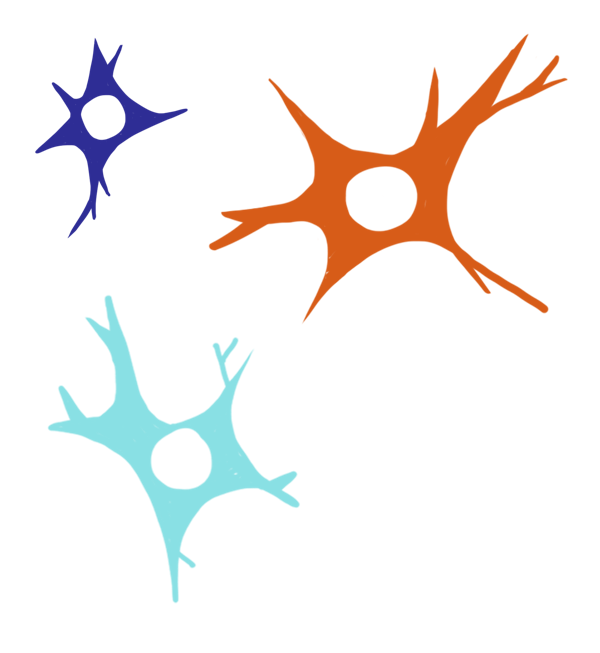
Five years later, while Hofmann was re-synthesizing LSD-25 to carry out more tests, he accidentally ingested a minute quantity of the compound and experienced colorful hallucinations, discovering its psychedelic properties. A few days later, Hofmann made a more rigorous self-experiment. He took a 250-microgram dose of LSD-25 — guessing how much to take based on his knowledge of other ergot derivatives, but which turned out to be 10 times higher than what would become the recommended dose for LSD-25. Overcome by hallucinations, Hofmann attempted to travel home with the help of a lab assistant. Because this was 1943 — the height of World War II — use of cars was restricted, and he had to attempt the trip home by bicycle. Hofmann experienced intense hallucinations and distortion of his sense of self — a "bad trip," figuratively and literally. Fearing for his life, Hofmann summoned his family doctor. But after the doctor reported that his life was in no imminent danger, and Hofmann started coming down from the peak of his trip, he began to enjoy the hallucinations. Sandoz patented LSD, and made it available to researchers as an experimental drug under the trade name Delysid in 1947, with a recommendation for use in psychotherapy. Sandoz also recommended that experimenting with the drug themselves could aid psychiatrists in better understanding psychosis in their patients.
But during the turbulent 1960s, a third type of experimentation with LSD had already spread across America: recreational use. Popular for its mind-opening qualities, LSD had penetrated the world of artists and academics, and authors like Aldous Huxley, Allen Ginsberg, and Ken Kesey were among its main supporters. Recreational psychedelic use was also buoyed by the exuberant endorsement of Dr. Timothy Leary, a Harvard psychology professor turned psychedelic advocate and ‘pied piper.’ (Leary famously told the youth of America to “Turn on, Tune in, and Drop out.”) Hofmann himself blamed Leary for precipitating the switch from medicinal to recreational use of LSD, which would soon overshadow its therapeutic potential.
Why were psychedelic drugs made Schedule 1?
Psychedelics are Schedule I, even though they aren’t addictive and they do show some therapeutic properties. Like marijuana, they got caught in the wrong place at the wrong time.
In the 1950s, LSD was being researched for its potential therapeutic use, as an addition to psychotherapy or used to treat patients for things like alcoholism or anxiety. But by the late 1960s, when the Controlled Substances Act was percolating, psychedelic drugs like LSD and psilocybin mushrooms had become symbols of the rebellious youth.
The increase in complaints about accidents resulting from recreational use of LSD coincided with the expiry of Sandoz's patents for the drug in 1963. This combination made LSD suddenly unprofitable, and Sandoz ceased production shortly after. Laws passed by the US Congress in 1965 tightened the regulations on psychedelic research, and investigators without explicit approval were required to surrender their LSD to the government.
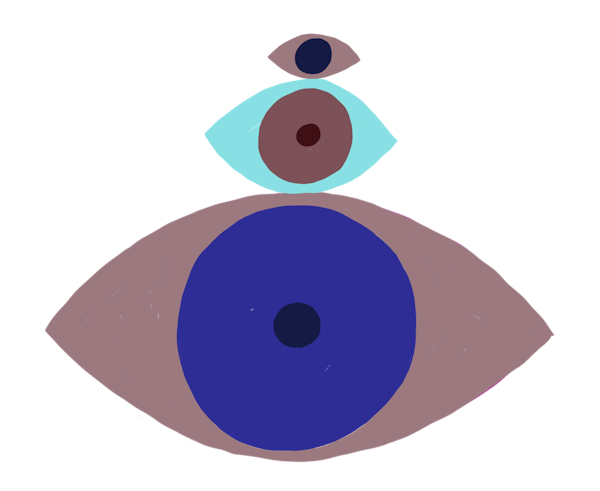
Meanwhile, with the 1968 "Summer of Love," psychedelic use moved firmly into the counterculture. Media sensationalized reports of terrible LSD-induced side effects, despite scientific evidence that serious side effects of LSD are very rare. In response, the US banned LSD later that year. Two years later, Congress passed the Comprehensive Drug Abuse Prevention and Control Act, including the Controlled Substances Act. The Controlled Substances Act focused on the criminal enforcement of drug regulation, and created five schedules, or categories of drugs. Psychedelics were placed into Schedule I, the designation reserved for the most dangerous substances.
Since the original Controlled Substances Act, the process of adding, changing, or removing drugs from their schedule lies mainly with Congress. Congress can add an amendment to the Controlled Substances Act which can affect the scheduling of drugs or the penalties for possessing them.
In retrospect, the push to include psychedelic drugs in Schedule I is seen to be mostly the result of social considerations and pushback against recreational use, particularly since the scheduling system was implemented close to the discovery of LSD and the movement of natural psychedelics into mainstream use, while research in their therapeutic potential was still underway. In contrast, other scheduled drugs such as cocaine and morphine, which pose a greater risk of dependence and adverse effects, had been medicinally used for decades before the Controlled Substances Act and that likely played a role in their designation as Schedule II drugs.
In 1971, the United Nations followed in the footsteps of the US, introducing a treaty broadly banning drugs, including psychedelics, across their member nations. The UN Drug Control Conventions organize drugs into four classifications or schedules, which are largely similar to the first four schedules in the United States. Like in the United States, psychedelics are a Schedule I drug by UN standards — considered to have high abuse potential and no therapeutic value.
Because UN member nations decide for themselves how to define criminal penalties for personal possession of controlled substances, there is great variability in how drug policies play out around the world. Countries like China, Iran, Malaysia, and Singapore have strict drug laws where distribution and even possession over a certain amount can carry the death penalty. On the other end of the spectrum, countries like the Netherlands and Uruguay have more liberal drug policies, where possession of small amounts of drugs has been decriminalized. In the Czech Republic possession of not more than "a small amount" of most drugs (including marijuana, cocaine, methamphetamine, and LSD) is a misdemeanor with a fine about equal to that of a parking ticket. But the country with the most liberal drug policy is Portugal, which became the first European country to abolish criminal penalties for drug possession in 2001, and in doing so has drastically reduced the death rate of drug users.
How has the ban on psychedelics affected scientific research on them?
In the era of the Controlled Substances Act and a shady government project known as MKUltra, psychedelics became banned and prohibited from research. Despite their therapeutic potential, many decision makers in our society still tends to view psychedelics as extremely dangerous.
Throughout the 1950s, the potential therapeutic effects of LSD were studied in the United States and in Europe. After the Controlled Substances Act became law in 1970, the main agency providing grants for research on psychedelics, the National Institute of Mental Health (NIMH), stopped funding studies into their therapeutic potential. At the same time, getting approval from the Drug Enforcement Agency (DEA) to possess some of the drug, even for preclinical studies, became nearly impossible to obtain. As a result, research into the therapeutic uses of psychedelics including LSD stopped abruptly — to the surprise of many people. Even US Senator Robert Kennedy was startled by the sudden halt of research into the therapeutic potential of LSD, perhaps because his wife, Ethel, had reportedly received LSD therapy.
Kennedy started a congressional probe into why psychedelic research was being stopped, and is quoted addressing the predecessor of the DEA with the question: “Why if [clinical LSD projects] were worthwhile six months ago, why aren't they worthwhile now? I think we have given too much emphasis and so much attention to the fact that it can be dangerous and that it can hurt an individual who uses it that perhaps to some extent we have lost sight of the fact that it can be very, very helpful in our society if used properly." He did not receive an answer, and the efforts continued to stop LSD research.
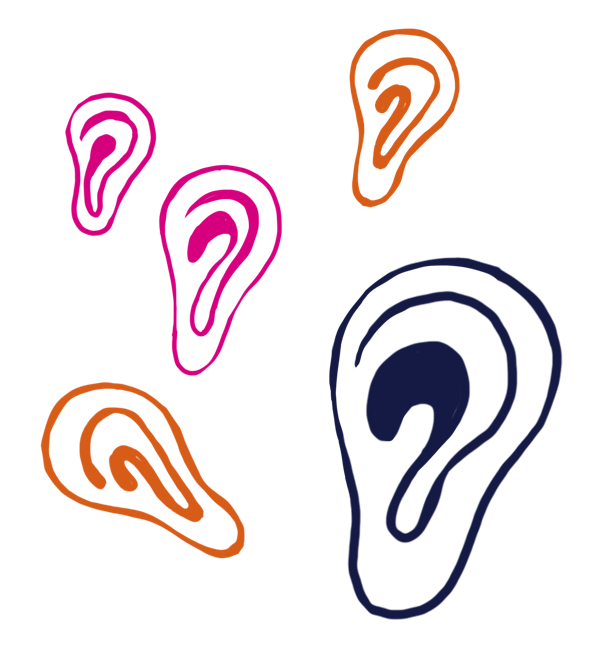
While this debate occurred, a more sinister set of experiments began in the background. The CIA began a secret project codenamed MKUltra in 1953. Against a backdrop of Cold War paranoia, the CIA set out to identify avenues of mind control to use for espionage, interrogation, and psychological torture. Increasingly, MKUltra focused on the use of psychedelic drugs — particularly very high doses of LSD — in illegal experiments where people in universities, hospitals, or prisons in the US and Canada were given the drug unknowingly or against their will. The program was disbanded in the 1970s, but not until after most of the documentation was destroyed in a post-Watergate frenzy, making it difficult to know the full extent of the damage done to unwilling participants. In 1977, a Senate Subcommittee chaired by Ted Kennedy investigated MKUltra, and called a final halt to the project.
Due to their scheduling regulations, psychedelics like LSD and psilocybin are still difficult to get approval to study, and face pushback from grant funding agencies and the public due to perception that drugs are dangerous. Preclinical research on psychedelics can sometimes circumvent these restrictions by instead studying a drug that is not scheduled, like 2,5-Dimethoxy-4-iodoamphetamine (DOI). But research compounds like DOI don't have the same established history of therapeutic potential for humans as LSD and psilocybin do.
The inclusion of psychedelic drugs in Schedule I and the end of research into their medical applications have contributed to the public perception that the drugs are dangerous. Among young adults, the perceived risk of trying LSD once or twice in their lifetime is higher than that of binge drinking weekly, in stark contrast to the actual biological risks. This discord between perceived and actual risks is especially striking considering that serious side effects from LSD are extremely rare, while alcohol directly contributes to 88,000 deaths per year in the US alone.
Are psychedelics actually as dangerous as their Schedule I status suggests?
Psychedelics are most likely not addictive and they don’t appear to cause any brain damage. But they’re still not nearly as studied as other drugs, especially for their long term effects. As always, we need more research.
Any drug that impacts the brain’s reward system can theoretically be addictive and abused. However, with the exception of LSD, most hallucinogens do not act through the dopamine reward pathway the way opioids do. That's why scientists think that they might be less addictive.
But to make that thought scientifically waterproof, science protocols demand completing reproducible, dose-dependent addiction studies in animals. It's worth noting that these studies show animals do not self-administer hallucinogens like they do stimulants and sugar, which further suggests that these set of drugs function differently in the brain — and that they don't cause addiction.
Another thing that causes drugs to be classified as harmful is if their use causes brain damage later in life. As of now, psychedelics don't appear to do this. A population study in 2013 looked at whether classical psychedelics such as LSD, psilocybin, and mescaline use was correlated with mental impairment later in life. Out of 130,000 participants, 13 percent reported psychedelic use, and researchers found no association between lifetime use of the drugs and increased rate of any mental health issue. In several cases, psychedelic use was associated with lower rates of mental health problems.
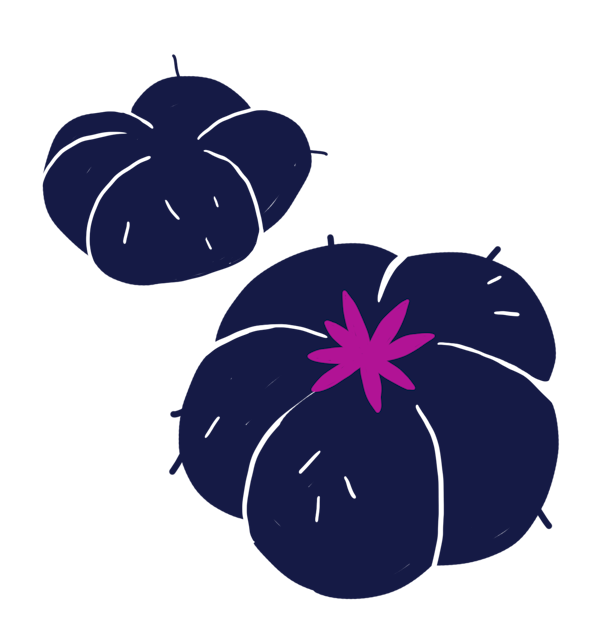
However, caution is essential until there are many more studies addressing the effect, if any, psychedelics has over time. One such study looked at the effects of consuming peyote (which contains mescaline) on 61 Navajo Native Americans. When compared to 79 individuals with a history of minimal drug history, a mental health survey showed that the Native American people had no deficits in memory, attention, and other cognitive functions. Similar results have been shown for ayahuasca use in 22 Spanish participants.
Ideally, we'd pursue this research on long-term side effects and the research on efficacy of psychedelics in treating psychological illnesses, since they seem to have promise for helping ease a variety of mental health conditions. This two-pronged approach would ideally validate their use as medication or show that the long-term consequences outweigh the benefits. For now, there's a lot we still don't know.